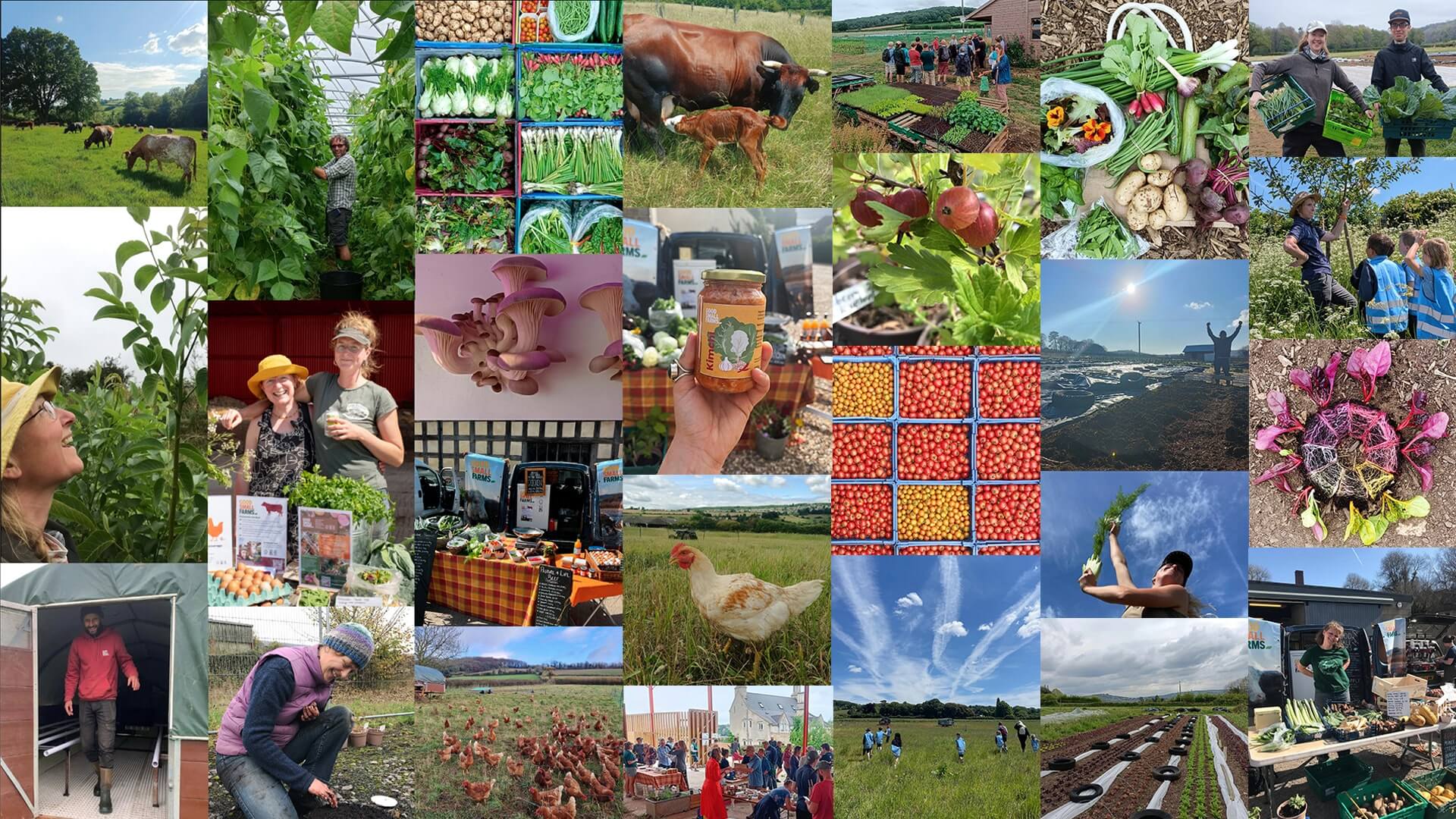The 30th June 2025 marked our fourth birthday! It is hard to find the time to reflect on what we have achieved over those four years – it feels both like a sprint and a long distance run; a blur and yet not moving quickly enough. If we were to quantify what we have achieved, we would highlight the number of trees we have planted (20,000), the number of seedlings we have nurtured (500,000), the revenue growth rate (50% p.a.) and the number of people we serve (300 a week?) but numbers can be massaged and impact that relates back to our mission isn’t so tangible.
Specifically, we are aiming to develop a viable, small, mixed, regenerative farm. And, while the term regenerative can be hard to grasp firmly, viable is also a tricky concept. On the face of it, viable simply means that our costs are less than our revenues. Easy. But how do we do that, year after year? The answer to that is another tricky concept: community. In order for people to want to spend their money with us rather than in a supermarket, they need to know us, like us, believe in what we stand for, appreciate the hard work that goes in to the food we grow and rear, and the food has to be absolutely delicious. And at the core of this relationship is trust. We invite people to the farm so that they can see first hand what we are doing; we talk about the things that are going well but also about the mistakes we have made, the dilemmas we face and the tricky decisions we need to make.
Quite understandably, we have had to earn that trust. We were a new entity taking over a conventionally run farm and deciding to do lots of things differently, in a short space of time. But our last open day in June felt great because it paid testament to that community of people who buy into what we are doing, are fantastic about helping us and want us to succeed.
We have plenty more to do; the next year and a half are about focusing on consolidating our learning, developing more comprehensive and complete systems so that our efficiencies can improve and we can reach that goal of break-even (inevitably we have a few additional projects simmering away: a catering kitchen, self-service shop and chicken processing facility, but more about those later).
The internal discussions are evolving too, to include such themes as governance, community ownership and succession planning and this is extremely exciting because at the heart of a truly viable business is a structure that isn’t reliant on a single individual but is resilient by virtue of having an amazing and adaptable team. This is a team that can cope if one person leaves and has the governance of experienced and motivated people to ensure that the company stays on mission.
And once we have reached financial break-even, what then? Well that is when it gets really exciting: if we can break even growing food for the lovely people of Stroud, can we improve efficiencies (yes) and what might we do with those efficiency gains? We could grow more food or, controversially, we could just work less. Imagine if we could get to the stage where we established a 4-day week as standard, on the same pay as we currently receive for working 5 days? This is a big ask, I will admit, but our trajectory points towards break-even and to not stopping there. The point about this thought experiment is about recognising that, once we are at break-even, we are at liberty to decide what to do with the surplus. It isn’t going into absentee shareholder pockets so it could contribute to either (or both) to reducing the amount we charge for our food or recognising the hard work of the team and remunerating them more than the real living wage rates currently paid.
Back to the here and now: each week we sell at 7 markets, run a box scheme of 40-50 subscribers and sell to our lovely wholesale customers. To be able to have so many customers, in so many different guises, gives us the reassurance that we are on the right track, growing and rearing delicious food for local humans.
Thank you to all who support us.
Eric.
